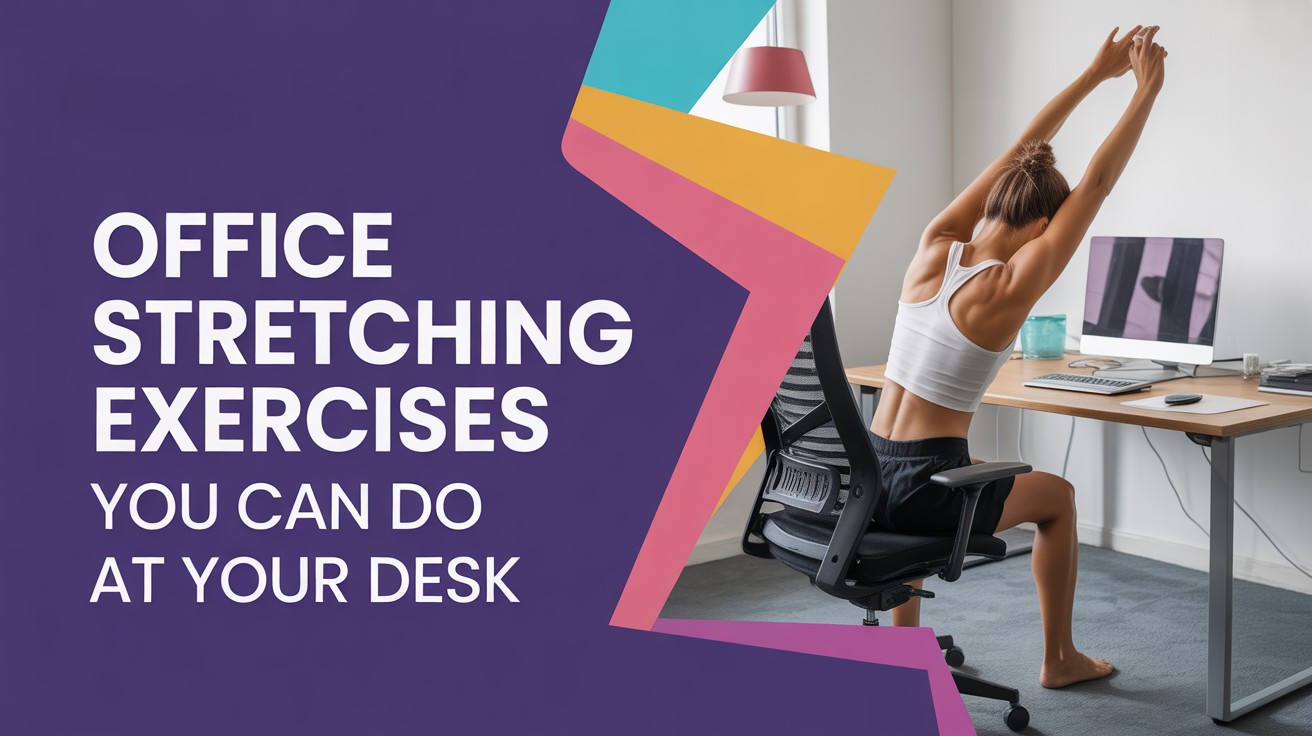Spending long hours at a desk can take a toll on your body. As a result, neck stiffness, back pain, and sore shoulders are common complaints among office workers. Fortunately, incorporating simple stretching exercises into your daily routine can significantly improve your posture, reduce discomfort, and boost your overall energy levels. Even better, you don’t need a gym or any special equipment—just a few minutes and your workspace are enough.
Why Stretching at Work Matters
Sitting for prolonged periods can lead to muscle tightness, decreased circulation, and even long-term postural problems. Therefore, adding short breaks with stretches is essential. Stretching helps counteract these effects by:
- Improving blood flow to muscles
- Reducing tension and stiffness
- Enhancing flexibility and mobility
- Preventing repetitive strain injuries
- Boosting mental clarity and energy
In other words, even a quick 5–10 minute session can make a noticeable difference in how you feel throughout the day.
Simple Desk-Friendly Stretching Exercises
Here are some easy and effective stretches you can do right at your desk. To begin with, try a few simple movements and then progress to longer holds.
1. Neck Stretch
Sit up straight and slowly tilt your head to the right, bringing your ear toward your shoulder. Hold for 15–20 seconds, feeling the stretch along the left side of your neck. Then, repeat on the left side. In addition, to increase the stretch, gently place your hand on your head and apply light pressure.
2. Shoulder Shrugs and Rolls
Lift both shoulders up toward your ears and hold for 3–5 seconds, then release. Repeat 10 times. For shoulder rolls, rotate your shoulders in a circular motion—forward five times, then backward five times. As a result, you will feel tension leaving your upper body.
3. Seated Torso Twist
Sit with your feet flat on the floor and spine straight. Place your right hand on the back of your chair and gently twist your torso to the right. Hold for 15–20 seconds, then switch sides. This way, you improve spinal mobility and help counteract slouching.
4. Wrist and Finger Stretch
Extend one arm in front of you, palm facing outward. With your other hand, gently pull back your fingers toward your body. Hold for 10–15 seconds, then repeat on the other hand. In the long run, this stretch reduces stiffness from typing and prevents carpal tunnel issues.
5. Seated Hamstring Stretch
Sit on the edge of your chair with one leg extended straight and your heel on the floor. Keep your back straight and lean forward slightly from your hips until you feel a stretch along the back of your thigh. Hold for 20–30 seconds, then switch legs. Consequently, this will relieve tight hamstrings and lower back discomfort.
6. Standing Side Stretch
Stand up with your feet shoulder-width apart. Raise your right arm overhead and lean to the left, keeping your body in a straight line. Hold for 15–20 seconds and repeat on the other side. Similarly, side stretches open up the torso and improve flexibility along the spine.
Tips for Staying Consistent
Above all, the key to success is consistency. Here are a few strategies:
- Set a Timer: Schedule short stretch breaks every 60–90 minutes.
- Combine with Movement: Stand up, walk around, or do a few steps to promote circulation.
- Listen to Your Body: Never push too hard—stretching should be gentle and comfortable.
- Stay Hydrated: Drinking water helps maintain muscle elasticity and energy levels.
Additionally, you can encourage colleagues to join, turning stretches into a team habit.
Final Thoughts
Integrating stretching exercises into your office routine doesn’t just reduce physical discomfort—it also improves your focus, mood, and productivity. In conclusion, dedicating a few minutes each day to simple movements like neck stretches, shoulder rolls, and torso twists will help you maintain a healthier, more energized body even during long workdays. Ultimately, the small effort pays off with big results.


Leave a Reply